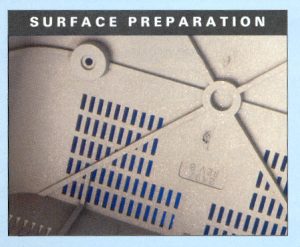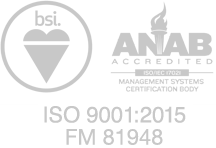Component surface preparation is the essential first step toward treatment of the surface prior to the application of any coating. How well a coating performs is significantly influenced by the initial component cleaning and surface treatment methods. Even the slightest trace of common surface contaminates such as oil, grease, and oxides can drastically impair the adhesion properties of a given coating.
Not only is it extremely important to clean the surface of a component prior to the coating process, but it is also important to clean the component prior to any blasting. Failure to remove surface contaminates before blasting will result in contaminates being distributed all over the part and all throughout the abrasive media.

The most thorough and efficient method of cleaning components after and machining or milling is abrasive blast cleaning. This method is also used in applications where oxidation must be removed. The abrasive blast cleaning method consists of impact abrasive particles with high velocity, impacting the surface of the component. The abrasive media is typically delivered through the use of compressed air or high RPM wheels which through media at a components surface.
The particle size of the media being used and its composition also play a major role in determining the quality or type of surface finish produced. In addition to a clean surface which is necessary for proper coating, surface roughness is also closely monitored, taking into consideration what type of coating will be applied.(Choosing Media ) For some coating applications like thin film paint, shot abrasives are used. For thick, high build coatings like thermally sprayed metal coatings, a coarse angular surface profile is ideal.



